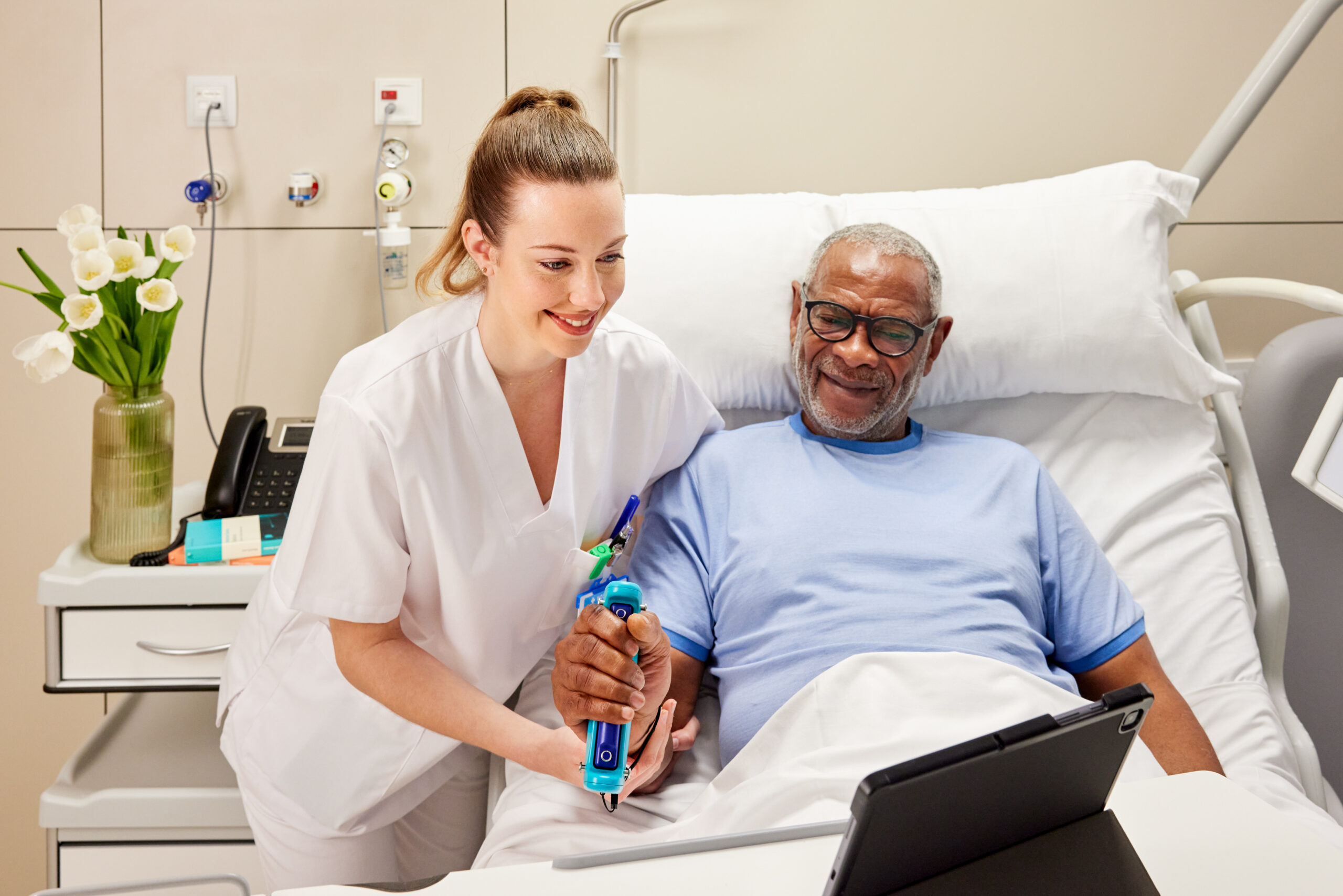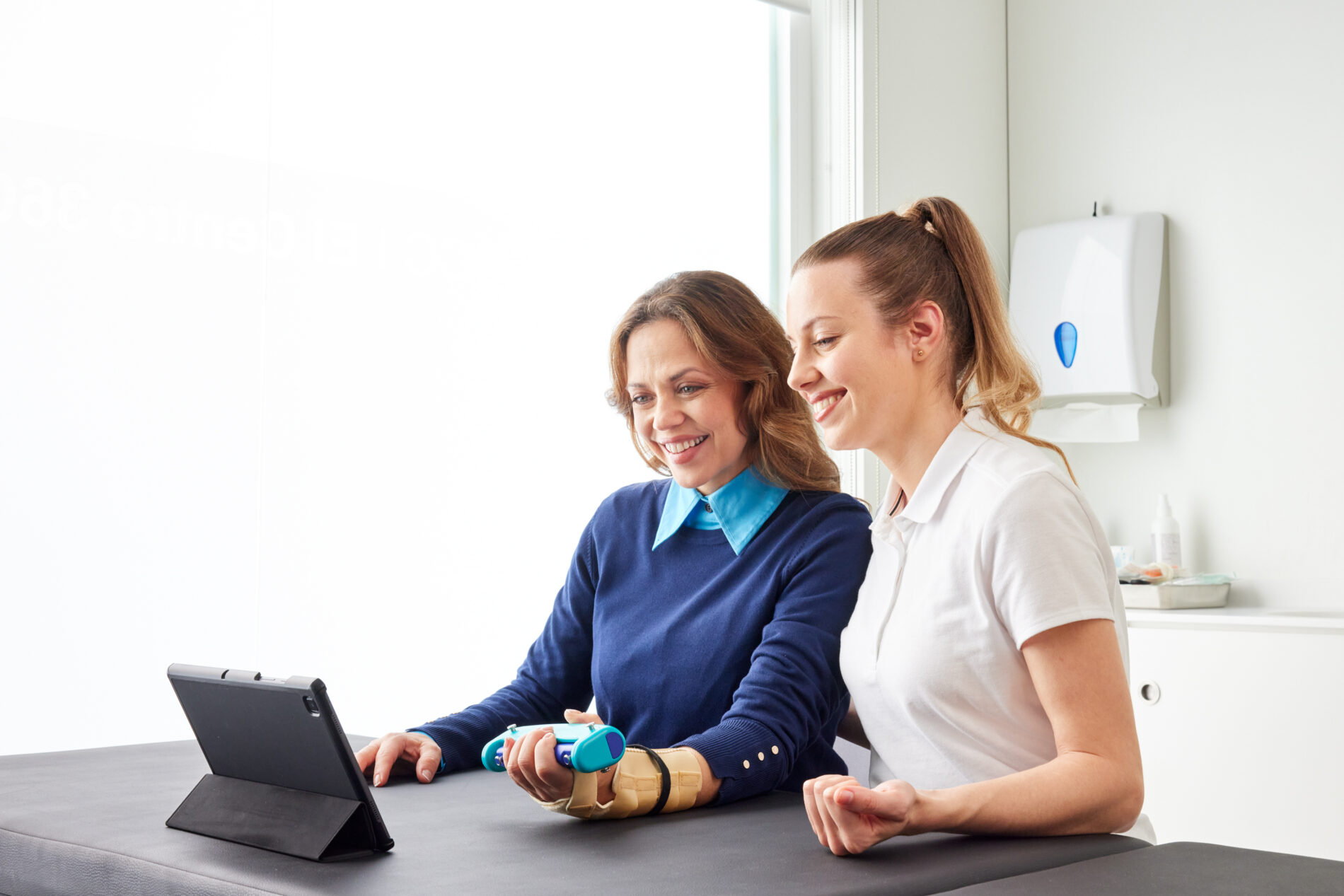Learned non-use: addressing the obstacle to rehab
Stroke survivor and GripAble ambassador Kate Allatt describes the phenomenon of learned non-use and highlights the importance of raising awareness to prevent the issue, to ensure better rehab outcomes for survivors of stroke, brain injury or other neurological conditions.
Getting back to carrying out everyday activities independently after a stroke or brain injury is a huge victory for survivors, and certainly no mean feat.
Regaining the ability to do small tasks like chopping up vegetables and brushing your hair goes a long way towards rebuilding confidence. But it can be all too easy to lead and overcompensate with the stronger hand or side of the body without the right support and guidance.
I later learned this was called ‘learned non-use’ and was shocked to find the lack of awareness and understanding of the issue amongst stroke survivors of all ages.
What is learned non-use?
Learned non-use results from neglect of the affected limbs after stroke, and can happen to anyone who has suffered an injury which impairs their movement. For example, it can happen when an arm is immobilised in a cast for a period of time. It can also occur following a brain injury where a person is affected by hemiplegia.
Stroke survivors sometimes become overly dependent on their non-affected hand to complete daily tasks. Learned non-use occurs when this neglect becomes severe, and the brain completely forgets how to use the affected hand or limb. This can also lead to muscle wastage.
Learned non-use is not necessarily permanent and can be treated via constraint induced movement therapy (CIMT), which is based on the theory that the affected limb may have a potential but unrealised ability to move due to reliance on the unaffected limb.
So, what can stroke survivors do to break this negative learning loop? Effort and commitment are required to prevent learned non-use, as stroke survivors must strive to use their affected side, even if it’s just a little, every single day.
Is learned non-use known about?
To gauge fellow stroke survivors’ understanding and knowledge of learned non-use, I consulted my online stroke communities. Some of the responses I received included:
“My brain doesn’t remind my weaker hand to spring into action, so I rarely use it. I do try every so often but it’s useless. I’m just thankful I have full range of movement and my hands look perfectly fine.”
“I’ve never seen any literature on it. For me, I use my strong hand all the time because my left has no sensation so no grip.”
“Never heard of it nor saw it discussed anywhere…there seems to be a lot of muscle wastage on my left hand. It doesn’t bother me.”
Sadly, it is clear to see that the issue is often ignored, and the potential for stroke and brain injury survivors to regain strength and engage with their affected hand or limb isn’t realised, presenting a barrier to rehabilitation.
The effects of learned non-use on both mental health and motivation can be profound, but with expert support from an occupational therapist, treatment is possible, and this begins with raising awareness and opening a dialogue around what learned non-use is and the effects it can have.
How can occupational therapists address learned non-use in patients?
Occupational therapist and neurorehabilitation specialist Lauren Edwards has experience with tackling learned non-use in her clients undergoing neuro rehab.
Speaking about treating the issue, she said:
“Constraint induced movement therapy (CIMT) can benefit those experiencing learned non-use. It is generally agreed that CIMT works best when there is a baseline level of movement present. Those with less movement are advised to explore alternative treatments first, but should always seekguidance from their therapist on what will work best for their individual circumstances.”
“Studies have shown that six hours a day of CIMT contributes towards recovery of movement in the affected hand, however changes can be seen with just three hours per day.”
“It is important that a variety of tasks and activities are used to challenge and stimulate movement in the affected arm,” Lauren explained.
“GripAble is a great tool to use at home for those undertaking a CIMT program. The games encourage wrist and hand movements and can be calibrated to the subtlest range of movement. Gaming can induce a sense of flow which can make those three hours pass a lot more quickly!”
Affordable remote rehab
GripAble is a mobile assessment and training platform which includes bespoke hand-held sensors, mobile hardware, software, in-built gamification and data services, to enable home-based rehabilitation for patients with a wide range of neurological and
musculoskeletal conditions including upper limb spasticity. GripAble’s unique handgrip sensor connects to a mobile app, allowing users to partake in specifically designed activities selected by their therapist, to train core hand and arm movements.
GripAble has been designed with remote rehab at its heart to enable ongoing training at home, even when face-to-face therapy isn’t possible. With the cost of living hitting many hard, GripAble has launched an affordable monthly rental option for home-based customers. At less than £1.50 a day, the rental has no minimum contract, making it an ideal option for people with short-term rehabilitation or training needs.
Want to know more?
Chat to GripAble’s friendly team of experts to see if the platform could help you, your family member, or your patients or clients.

